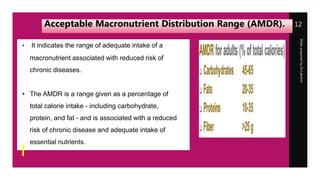In the pursuit of effective weight loss, understanding and managing macronutrient distribution is a critical component that often distinguishes successful strategies from fleeting efforts. Macronutrients—proteins, carbohydrates, and fats—serve as the foundational elements of our diet, each playing a unique role in fueling the body and influencing metabolic pathways. For individuals committed to optimizing their nutritional intake for weight loss, the precise calculation and adjustment of these macronutrients can significantly enhance results. This article delves into the best tools available today for calculating macronutrient distribution, offering an authoritative guide to selecting and utilizing resources that align with your weight loss goals. Whether you are a novice seeking guidance or a seasoned fitness enthusiast aiming to refine your regimen, these tools provide the insights necessary to make informed dietary choices and achieve sustainable weight loss.
Understanding Macronutrient Basics for Effective Weight Loss
Embarking on a weight loss journey involves more than just cutting calories; it requires a strategic approach to macronutrient distribution. To effectively manage this, several tools are available that can help you tailor your diet to your personal needs. These tools not only simplify the process but also ensure that your body receives the right balance of nutrients.
Consider using the following tools for precision and ease in calculating your macronutrient needs:
- MyFitnessPal: A versatile app that offers extensive food databases and customizable macronutrient goals, helping you track your intake with precision.
- Chronometer: Known for its detailed nutrient tracking, it provides insights into your macronutrient distribution and micronutrient intake, ensuring a balanced diet.
- IIFYM Calculator: This online tool helps you calculate your ideal macronutrient ratios based on your goals, body type, and activity level.
- MacroFactor: This app uses advanced algorithms to adjust your macronutrient targets dynamically, promoting sustainable weight loss.
Integrating these tools into your routine can streamline your diet planning, offering a structured path to achieving your weight loss goals through balanced nutrition.

Exploring Advanced Calculators for Personalized Nutrition Plans
In the realm of personalized nutrition, advanced calculators have emerged as indispensable tools for crafting effective weight loss strategies. These sophisticated platforms allow users to fine-tune their macronutrient distribution, ensuring a balanced intake of proteins, carbohydrates, and fats tailored to individual goals. Precision Nutrition’s Calculator is a standout, offering detailed insights based on personal data such as age, gender, activity level, and dietary preferences. It goes beyond mere calorie counting by providing recommendations that align with specific fitness objectives, whether it be weight loss, muscle gain, or maintenance.
For those seeking a more interactive experience, MyFitnessPal integrates seamlessly with other fitness apps and devices, offering a user-friendly interface that tracks daily intake and progress over time. Its extensive food database simplifies meal planning, while the customizable goals feature allows users to adjust macronutrient ratios according to evolving dietary needs. Other noteworthy tools include:
- Macro Calculator by IIFYM – Known for its flexibility in diet planning.
- Carb Manager – Ideal for those focusing on low-carb or ketogenic diets.
- Lose It! – Offers a community-driven approach with peer support.
Each of these calculators provides a unique set of features that can significantly enhance the efficacy of a personalized nutrition plan, empowering individuals to achieve their weight loss goals with precision and confidence.

Top Mobile Apps for Tracking Macronutrient Intake
When embarking on a weight loss journey, having the right tools can make all the difference. In the digital age, mobile apps have become indispensable for managing dietary goals. These apps provide detailed insights into macronutrient consumption, helping you maintain a balanced diet tailored to your personal needs. Here are some top contenders to consider:
- MyFitnessPal: Known for its extensive food database, MyFitnessPal makes tracking macronutrients effortless. The app allows you to set specific goals for protein, carbs, and fats, offering a clear view of your daily intake.
- Lose It!: With its user-friendly interface, Lose It! provides personalized recommendations based on your weight loss objectives. It also includes a barcode scanner for quick food entry and offers detailed nutrient breakdowns.
- Carb Manager: Perfect for those focusing on low-carb diets, Carb Manager tracks not only macronutrients but also net carbs, making it easier to adhere to ketogenic or other carb-restricted plans.
- Cronometer: This app goes beyond basic macronutrient tracking, offering insights into micronutrients and vitamins as well. Its comprehensive approach ensures you meet all your nutritional needs.
These apps not only facilitate macronutrient tracking but also provide valuable educational resources, empowering users to make informed dietary choices. With these tools, achieving your weight loss goals becomes a more structured and attainable process.

Expert Recommendations for Optimizing Macronutrient Ratios
Achieving the perfect balance of macronutrients is crucial for effective weight loss, and experts suggest focusing on a personalized approach. The first step is to determine your individual goals, activity level, and dietary preferences. Dietitians and nutritionists often recommend a macronutrient ratio that includes:
- Protein: Essential for muscle maintenance and satiety. Aim for 25-30% of your daily caloric intake.
- Fats: Necessary for hormone production and nutrient absorption. A healthy range is 20-35% of your calories.
- Carbohydrates: The body’s primary energy source, usually set at 45-55% of your daily intake.
Personalized nutrition plans often yield the best results, and tools like macro calculators and tracking apps can help tailor these ratios to your specific needs. These tools consider factors such as basal metabolic rate (BMR) and total daily energy expenditure (TDEE), providing a customized framework to follow. Remember, while general guidelines are a great starting point, consulting with a nutrition professional can ensure your macronutrient distribution is optimized for your unique body composition and weight loss goals.
